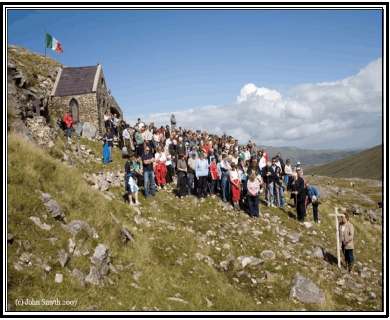 All three Abrahamic religions begin with a journey into the unknown: a man Abram experiences a call from an unknown deity to leave the relative comfort of the Fertile Crescent with all his family and belongings and to move into the unknown. The tradition of pilgrimage – an intentional break in the routine of daily life and its comforts in order to enable us to better experience the presence of the Divine – has continued in all three faiths. Muslims participate in the Hajj, Jews visit the Wailing Wall in Jerusalem, and Christians make pilgrimages to any number of holy sites. As a Spiritual practice, pilgrimage is about intentionally breaking with the comfort of routine in order to allow God to shine in our lives in a different way. Throughout the centuries, our religions have been at their best when they have been on journeys, not settled on the throne of power in some empire capital but walking on a path of exploration at the margins of society seeking a renewed connection with the Mystery Beyond. And so, people of faith everywhere periodically interrupt their comfortable normal lives with an intentional experience of discomfort, dislocation, and intensity, a kind of re-enactment of the original archetypal journey of Abram. People who have been on pilgrimages often speak of deep “conversion experiences.” If you wish to learn more about this spiritual practice, check out the Wikipedia website on the subject.
All three Abrahamic religions begin with a journey into the unknown: a man Abram experiences a call from an unknown deity to leave the relative comfort of the Fertile Crescent with all his family and belongings and to move into the unknown. The tradition of pilgrimage – an intentional break in the routine of daily life and its comforts in order to enable us to better experience the presence of the Divine – has continued in all three faiths. Muslims participate in the Hajj, Jews visit the Wailing Wall in Jerusalem, and Christians make pilgrimages to any number of holy sites. As a Spiritual practice, pilgrimage is about intentionally breaking with the comfort of routine in order to allow God to shine in our lives in a different way. Throughout the centuries, our religions have been at their best when they have been on journeys, not settled on the throne of power in some empire capital but walking on a path of exploration at the margins of society seeking a renewed connection with the Mystery Beyond. And so, people of faith everywhere periodically interrupt their comfortable normal lives with an intentional experience of discomfort, dislocation, and intensity, a kind of re-enactment of the original archetypal journey of Abram. People who have been on pilgrimages often speak of deep “conversion experiences.” If you wish to learn more about this spiritual practice, check out the Wikipedia website on the subject.